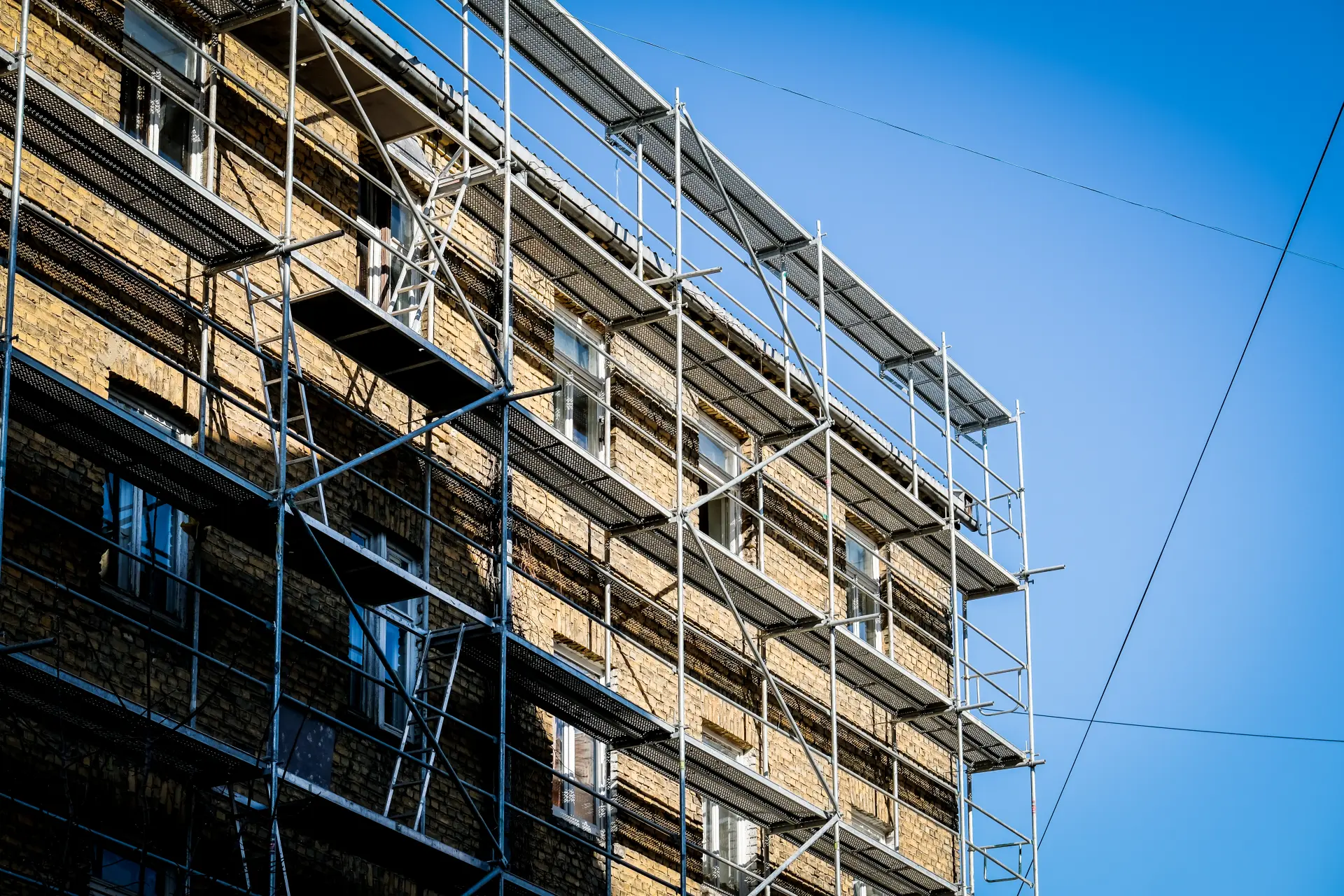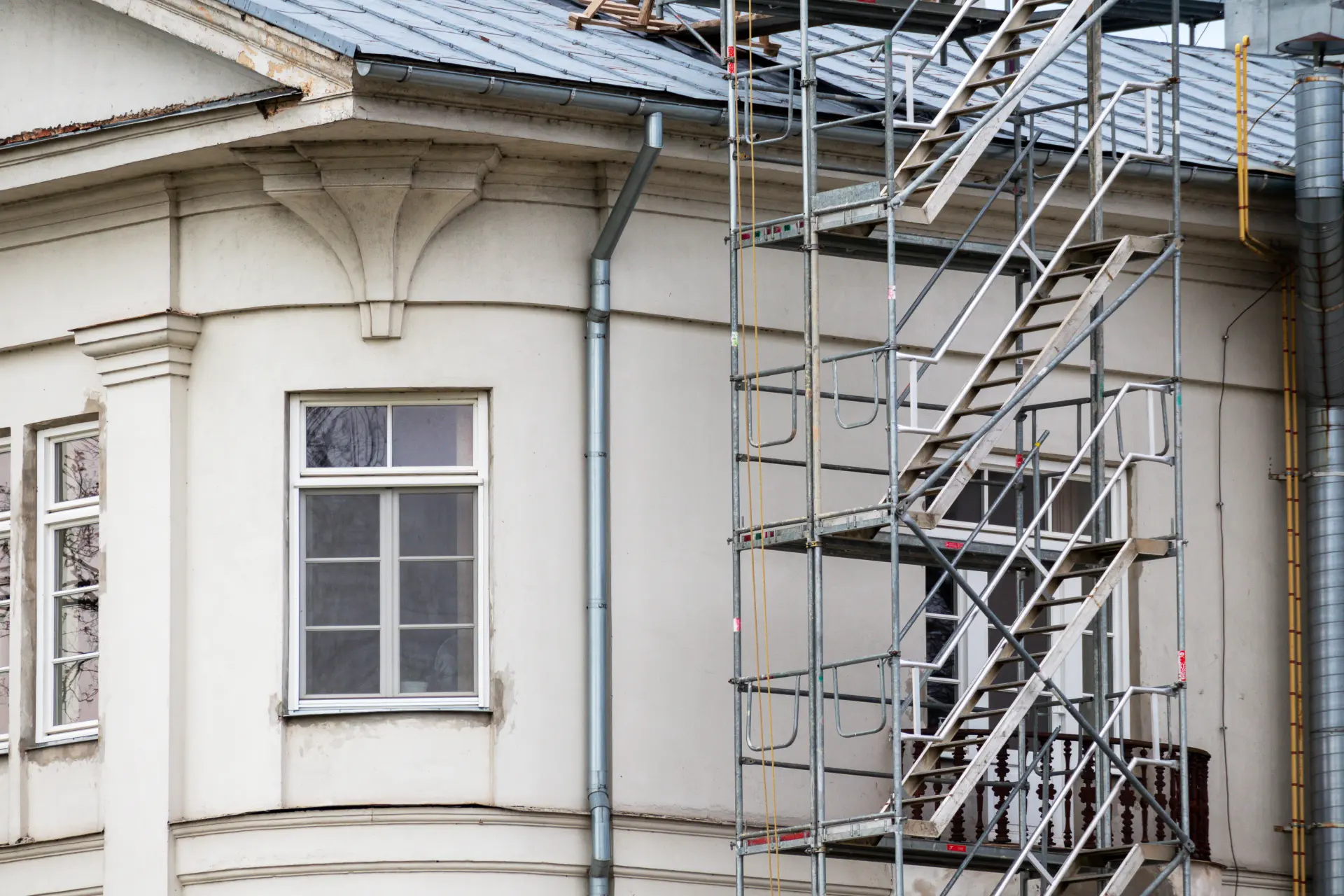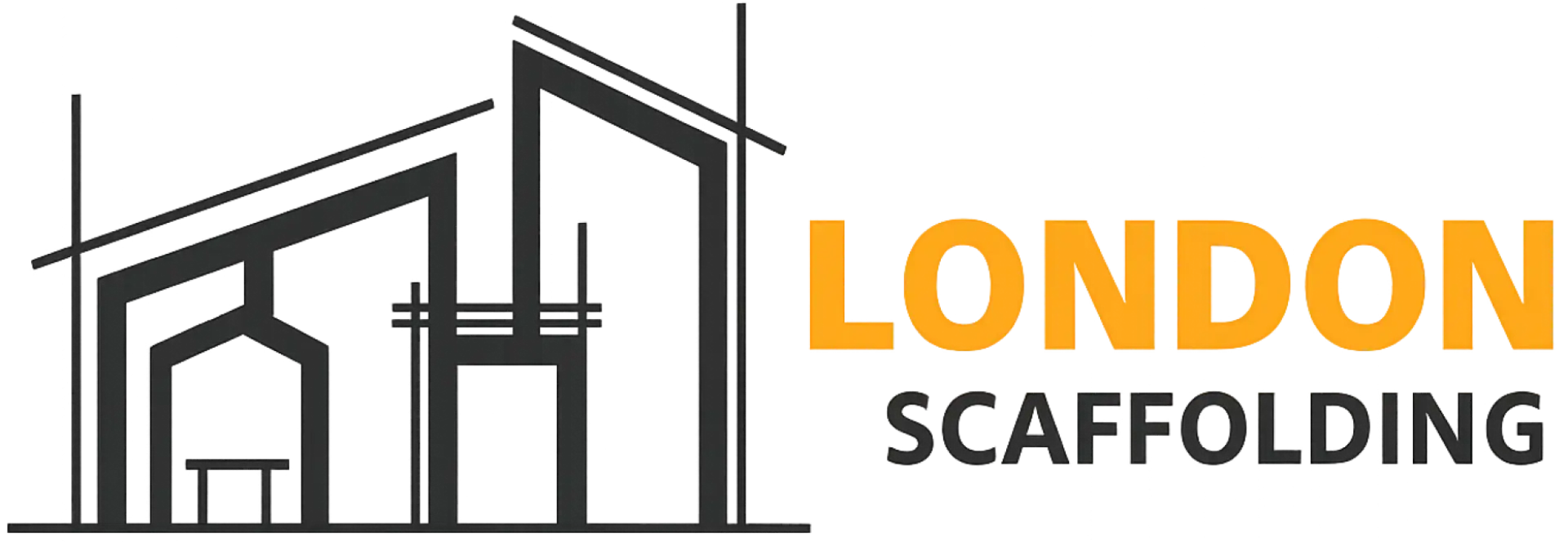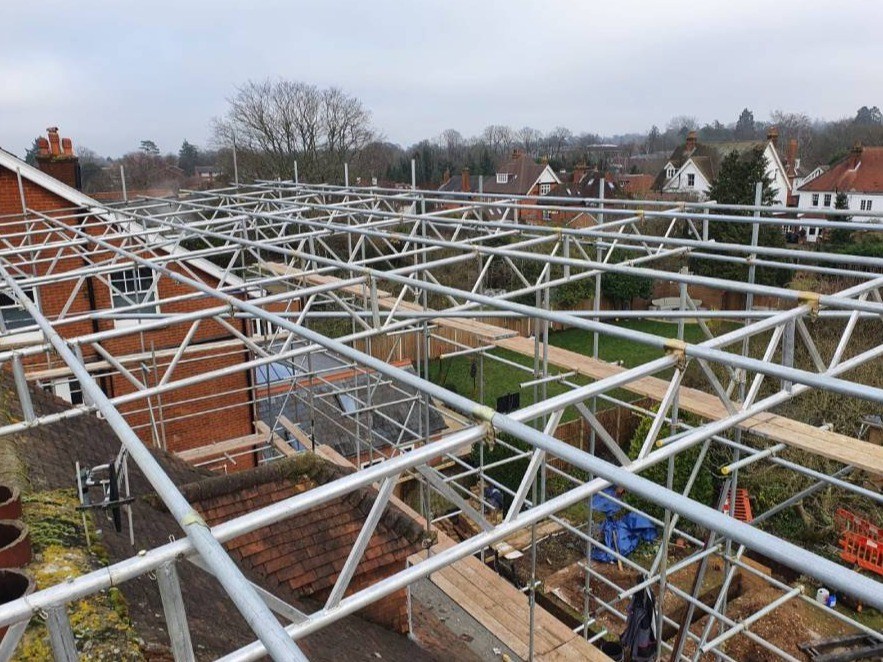Size and Height of the Project
Your project's size and height are two of the biggest factors that affect your scaffolding hire costs. As your project's footprint grows, you may need more bays, returns and elevations, ledgers, transoms, and boards and edge protection. This can increase the overall price of your kit hire, erection and dismantle time, as well as the transportation costs.
Height amplifies everything. Taller scaffolds need extra lifts, greater tie density, more bracing and often heavier-duty components to control the scaffold's deflection and sway. Wind exposure can also impact the scaffold's design time, and it can sometimes require sheeting, debris netting, protection fans or temporary roofs, which each add more weight and labour to your project.
The type of Scaffolding that's Required
The type of scaffolding that your project needs will have a direct impact on the hire price since it changes the project's engineering, labour productivity and the risks of the job. Tube-and-fitting scaffolding provides maximum flexibility for façade projects, but it's slower to erect, which can increase the labour costs, whereas system scaffolds such as ringlock/cuplock scaffolding can be assembled faster since they need fewer components, which can lower your total labour cost.

On the other hand, the total cost can increase if your project needs specialist scaffold setups, such as suspended cradles or cantilever scaffolding. This is because suspended scaffolding needs powered hoists, roof rigs/davits, counterweights and LOLER examinations, and cantilever scaffolds need extra beams, anchors, kentledge, testing and monitoring. Additionally, Keder sheeting and ties can raise the price of both the material's weight and design time since they aim to protect the building from adverse weather.
Ultimately, the scaffold type governs how much kit, hours and compliance regulations are required, so selecting the right scaffolding system and fixing the scope of your work is the easiest way to achieve a predictable price.
Location and Accessibility of the Site
Your project's location and site accessibility are major factors that can affect your scaffolding hire costs because they shape your project's logistics, labour time, planning permission and risks. Dense, footfall-heavy areas often require parking suspensions, footway closures and traffic management, as well as permits.
For narrow alleys, internal courtyards and height-restricted areas, you'll need to use smaller vehicles; this means there'll be more trips and longer manual carries, which can increase your labour costs. Additional labour, hoists or rope-and-wheel operations may also need to be used for areas where cranes are inefficient, and internal fittings that need to be protected can also slow down your productivity and extend your hire time. In short, harder-to-reach, highly regulated or space-constrained areas will take longer to service, which naturally raises your overall hire price.
Hidden Costs to Watch Out For
Hidden costs in scaffolding hire often appear outside the main price, and understanding them up front can help you control your budget and avoid surprises. Weekly hires, delays by other trades, bad weather or late snagging can add a range of small charges to your overall hire price, and this is because delays or changes to the scaffold's assembly won't be exempt from the overall price.
Additionally, the temporary works calculations, drawings, revisions and category checks can be charged separately, especially when you're hiring cantilevers or if you need anchor pull-tests, proof tests and sign-off visits. Small changes that are requested mid-project, such as extra lifts, hop-ups, moving ties, widening bays, or adding stairs and loading gates, can add call-out rates and additional hire fees for the new components.

Licences for scaffolds on the highway, parking suspensions, lane closures, diversions and Chapter 8 barriers are often pass-through or third-party costs that are billed to you directly. In city centres, ULEZ/CAZ charges, night working or delivery curfews add extra charges to your bill.
Moreover, debris netting, flame-retardant sheeting, full encapsulation, protection fans, pedestrian tunnels, lighting and scaffold alarms can also increase the cost of your project, especially on busy high streets or hospitals.
To avoid these surprises, it's crucial to request an itemised quotation that covers the project's and the scaffolding's design, alterations, testing, protection, alarms, traffic management, minimum hire costs, waiting rates and off-hire rules.
At London Scaffolding, we can supply, erect and inspect safe scaffolding structures. Whether you need supported, suspended, cantilever or mobile towers, we can provide what you need.

